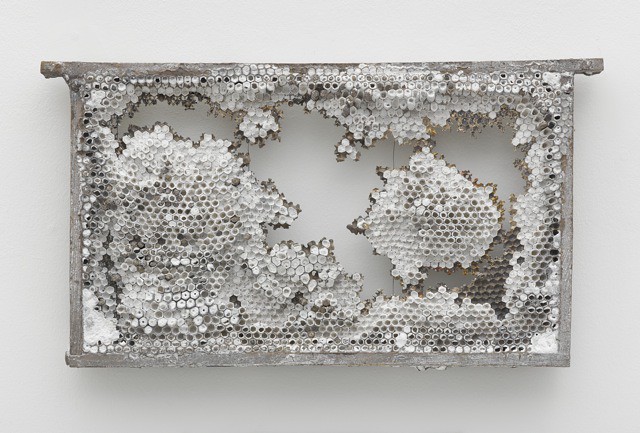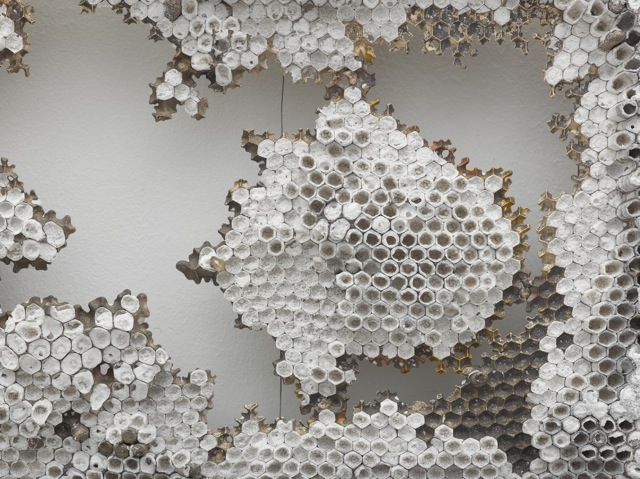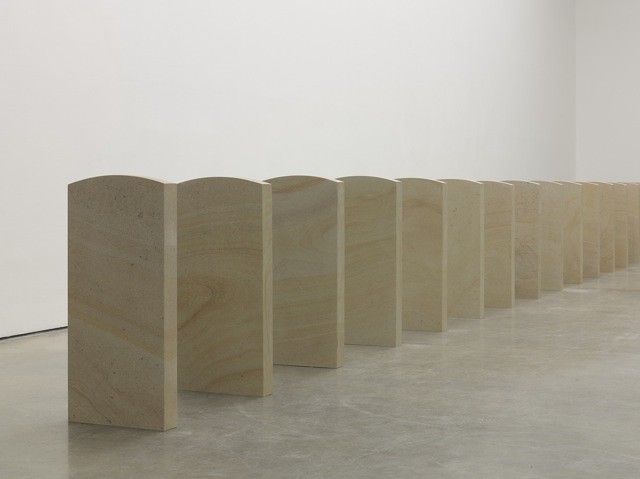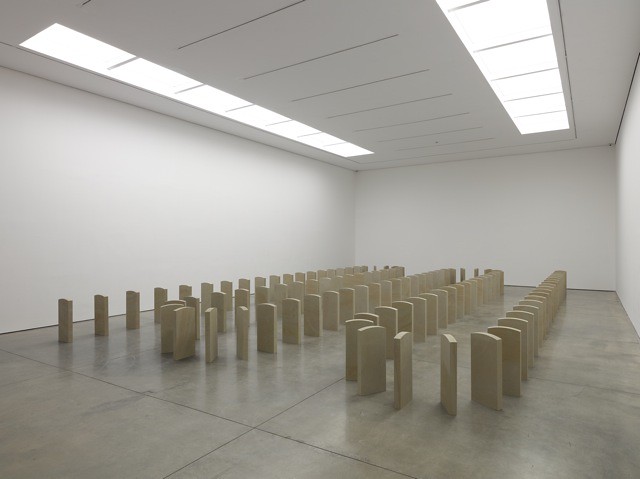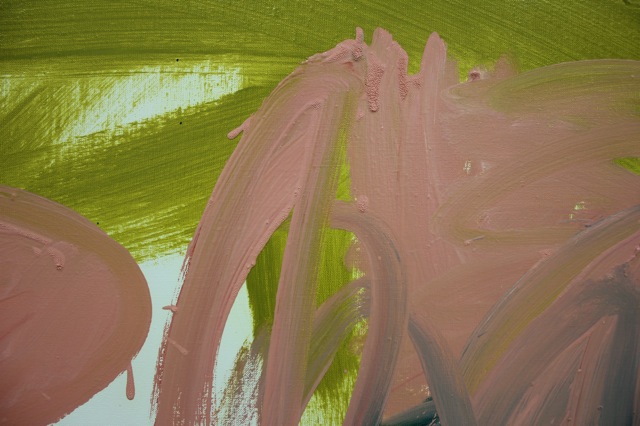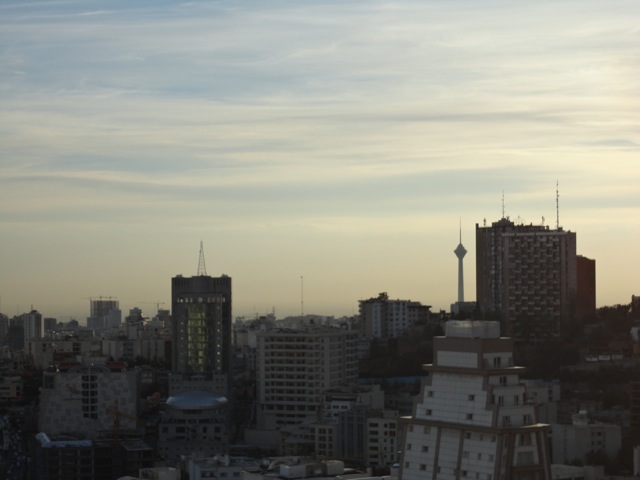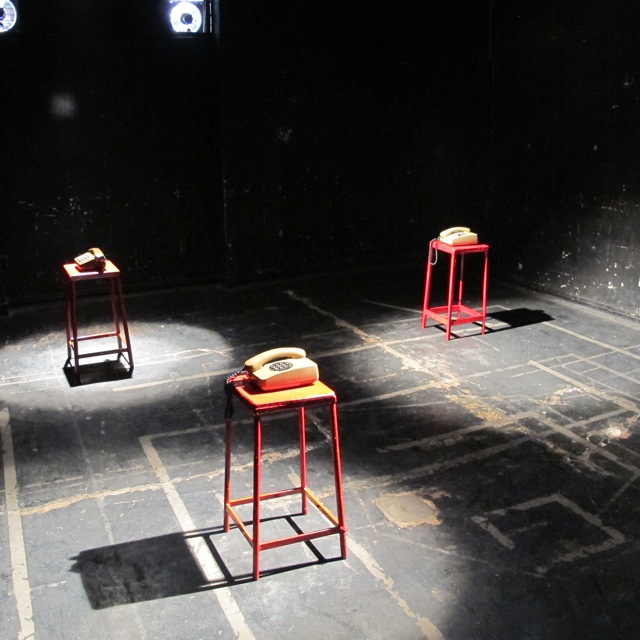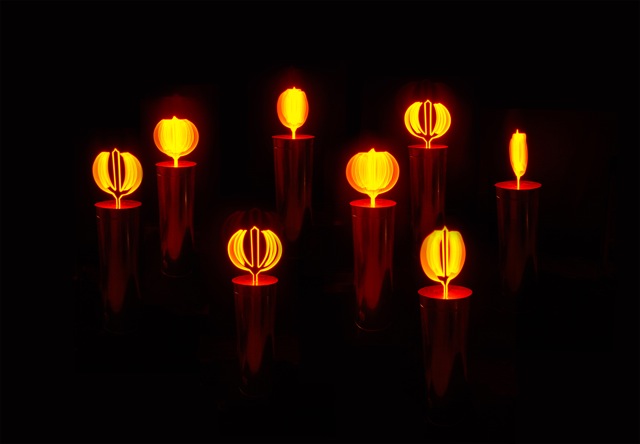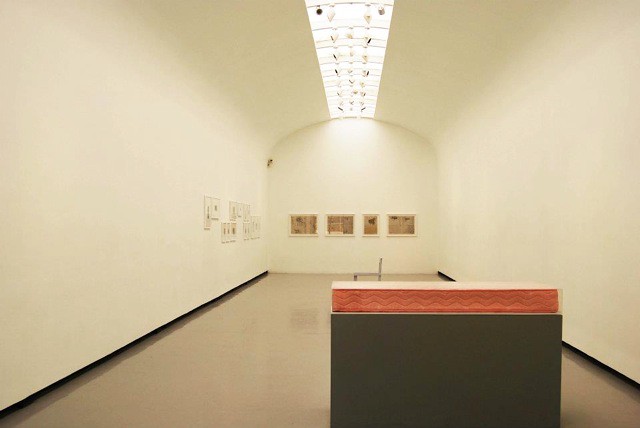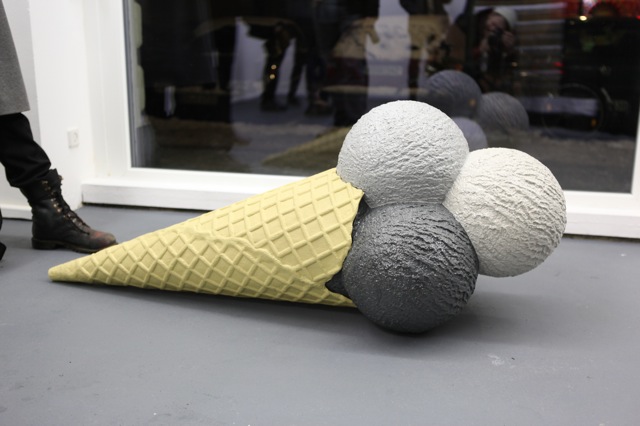

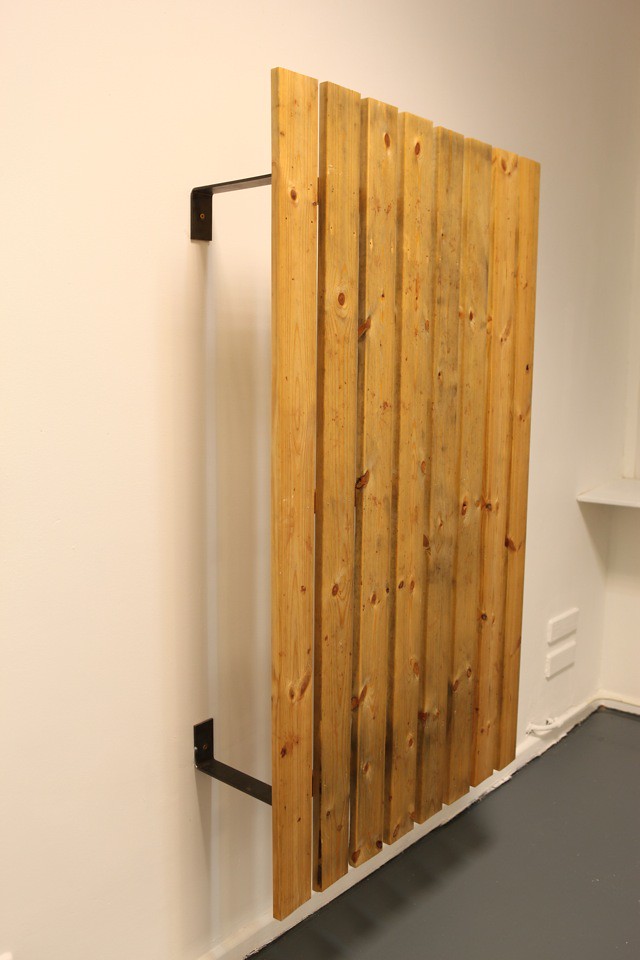


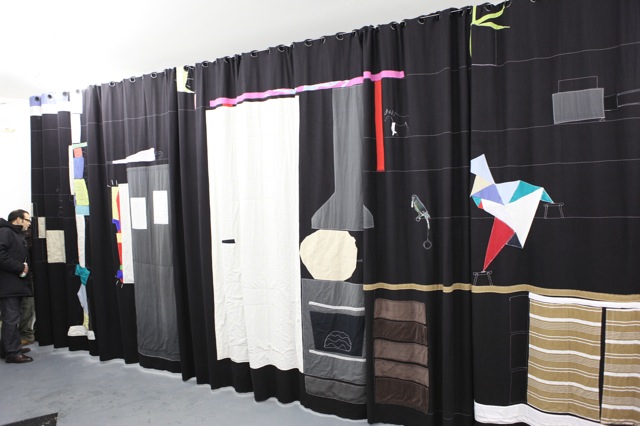
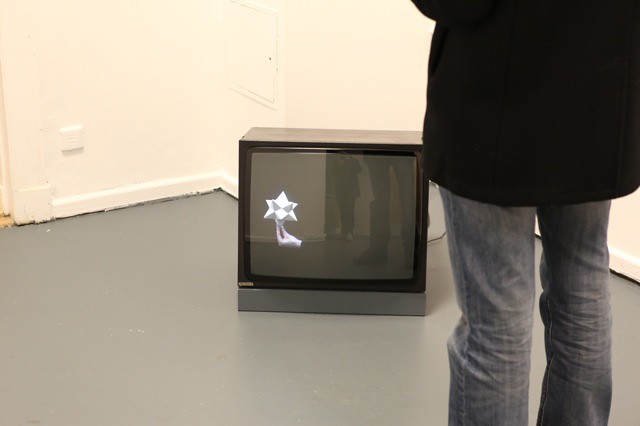
From the top: 2x 'Sad Eis' sculpture by Sarah Ortmeyer, 'Garden Painting' by Frederik Vaerselv, 2x 'Solid Objects' by Sanna Marander, curtain 'Ce n'est pas une brioche' by Carl Palm, video work by Priscila Fernandes
Back in the 90s, art theorist Hal Foster wrote his book on
The Return of the Real, referring to Jaques Lacan's psychoanalytic theory on the untouchable, unimaginable, immaterial order of the 'Real'. At Invaliden1 current group show
The Return of the Object, curator
Stefanie Hessler returns to the very touchable, the fetish of the object, investigating in a new philosophical trend: Speculative Realism. This movement doubts pretty much all older philosophies and the belief in science. It returns to a purely self-sustainable material order and denies all hierarchies between objects and subjects.
Hessler's exhibition juxtaposes five contemporary positions demonstrating different handlings of materiality in (art)-objects. Subliminal and humorous, Sarah Ortmeyer's sculptures 'SAD EIS' manipulate our common object-based triggers of happiness, by replacing the expected pastel-colours of two huge ice-cream sculptures with black, white and grey. Frederik Vaerselv 'Garden Painting', on the other hand, projects the object's self-sustainability and the artist's withdrawal on a wooden panel, which he left outside of his studio where berries and birds left their traces on the object's surface. These two art pieces seem to demonstrate most clearly, how Stefanie Hessler wants to explore material fetishism.
Another nice installation has been done by Sanna Marander, who placed colourful small objects on the floor, which appear quite random and play with the idea of a collection - its beginning, its evolving and its place of display. The place of display also has an importance in Carl Palm's curtain piece 'Ce n'est pas une brioche', which originally functioned as a room seperator for group shows. A little more complicate and perhaps a little too complex in its approach, is Priscila Fernandes origami video piece, which intends to evoke desires for the non-existing object.
